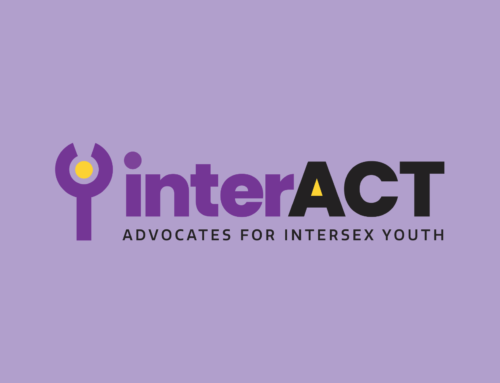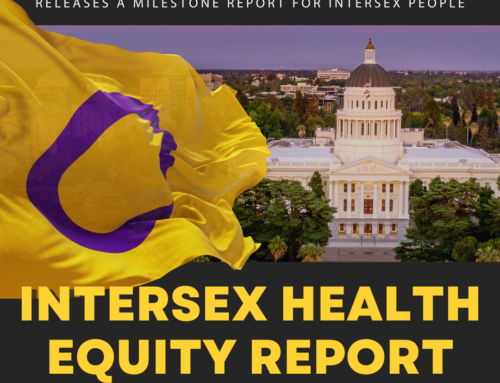AIC’s Blog Series, “Turning the Lens Inward,” features interviews with some of the key leaders and supporters who have helped make AIC the strong organization we are today! The third installment comes from AIC’s Board President, Sean Saifa Wall, and gives readers a glimpse of what Saifa believes are some of the intersex communities biggest challenges and what he views have been some of its biggest successes.
As one of many people living with Androgen Insensitivity Syndrome (AIS), I was assigned female at birth. For most of my life, I lived as a masculine of center woman until I decided to transition to male at the age of 24 when I moved to the San Francisco Bay Area. I had not met another guy with AIS until I moved to the San Francisco Bay Area where I met Jim Ambrose. Prior to meeting Jim, the transition from female to male was a lonely one. I had no one to talk to about testosterone therapy and dosing except for Tony Briffa, another intersex activist living in Australia, who was undergoing a different form of testosterone replacement therapy. We connected instantly.
Through shifting life circumstance, Jimmy and I lost touch for about four years and we reconnected in 2011. When we met up, he told me about his involvement with AIC and soon after I volunteered at an AIC event in San Francisco where they screened the intersex documentary featuring Jim, XXXY. Being there and watching that film inspired me to take action. After meeting with Anne and Jim at a local coffee shop, I knew I wanted to get more involved in the fight for the dignity of intersex people. I was nominated for AIC’s board and shortly after I became co-president and currently serve as President. Under my leadership, AIC is currently embarking on a new strategic planning process this fall. I believe it’s time and a necessary part of our growth and development, as one of the leading organizations in the United States, to stand in solidarity with children and adults born with intersex traits.
The most challenging aspect related to building support for children and families is finding the families! I think that we still have work to do in order to reduce the stigma that surrounds people’s discussion of intersex traits because for too long the thinking was that this was solely an issue between doctor and patient. My dream is to see more parents and affected children being able to come forward and speak their truths. Concrete steps in making this happen include building support for intersex children and families, like AIC is currently doing in the “M.C. v. Aaronson” case, in order to grow our movement to a point where more families can come forward and speak out. I have seen that when intersex children and families have community, they are emboldened with a sense of pride in who they are and that pride can often be contagious.
I have hopes that some day soon most, if not all, people will be able to define intersex in a common language. I want people to know that intersex traits cut across all cultures, genders and ethnicities. I also never want people to lose sight of how valuable the contributions made by the queer community, and its queer intersex pioneers, have been to the intersex movement.
In the next five years, I would like to see more intersex trainings happening in hospitals and medical schools. I want to see the intersex movement gain momentum similar to what is taking place within the transgender community. I also want more intersex people coming out and speaking about their lives and experiences in ways that are real and transformative. Our movement has various ties with the overall social justice movement, and specifically I see many overlapping points of entry with the reproductive justice movement.
In the end, intersex rights is a human rights issue because all people, intersex included, have an inalienable right to our intact bodies. With this vision of liberation for our community, I can’t wait to see the new avenues AIC will embark upon after completion of our Strategic Planning session.
Want to get in involved? Here’s two ways!
1. Follow AIC on Twitter and Facebook
2. Stand up for intersex people and their rights by contributing a donation to AIC.





